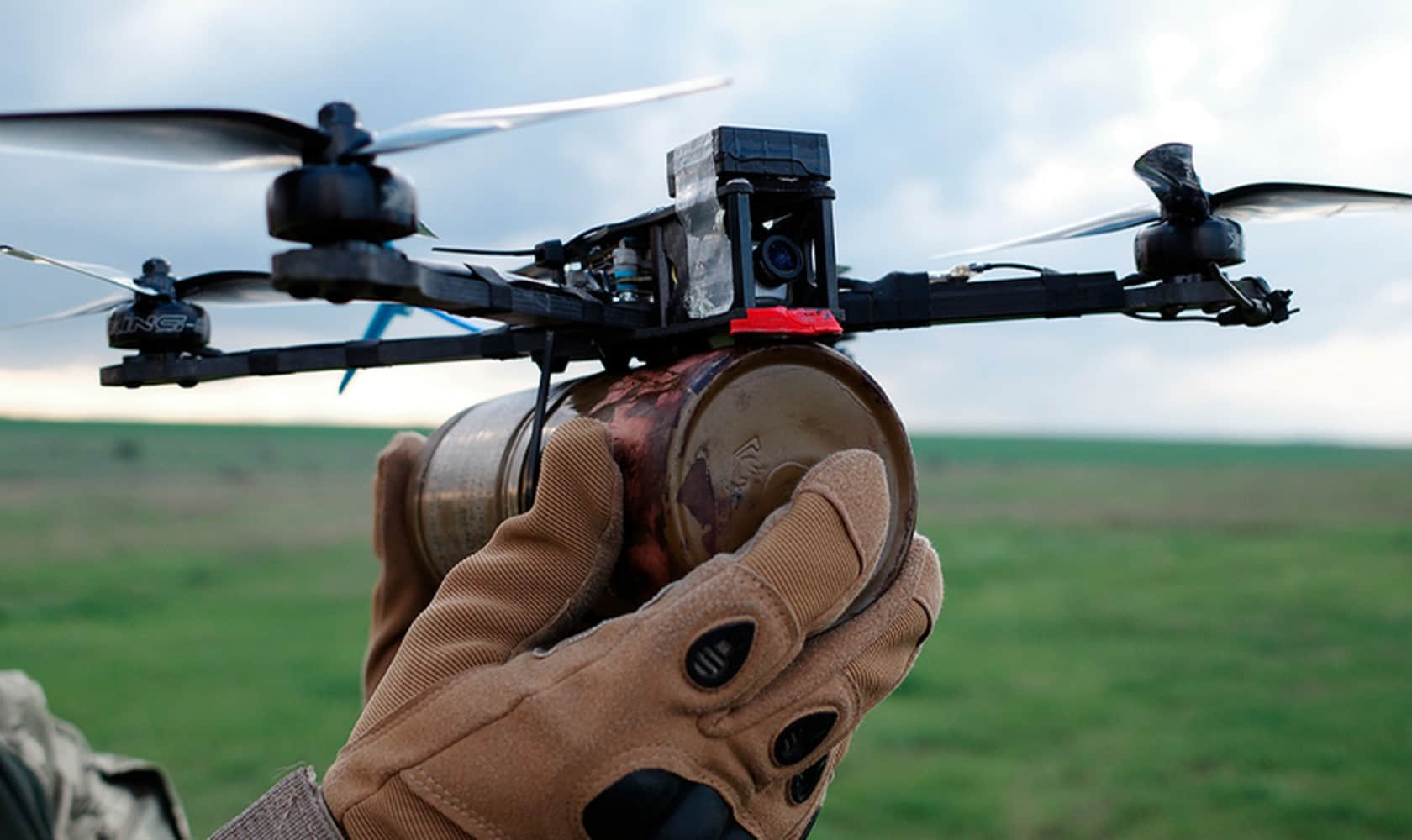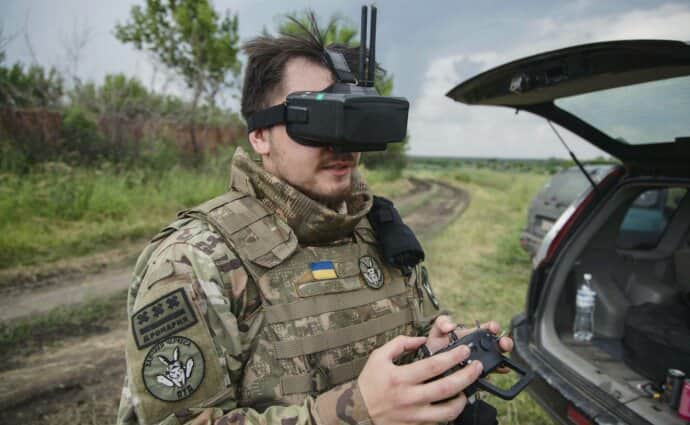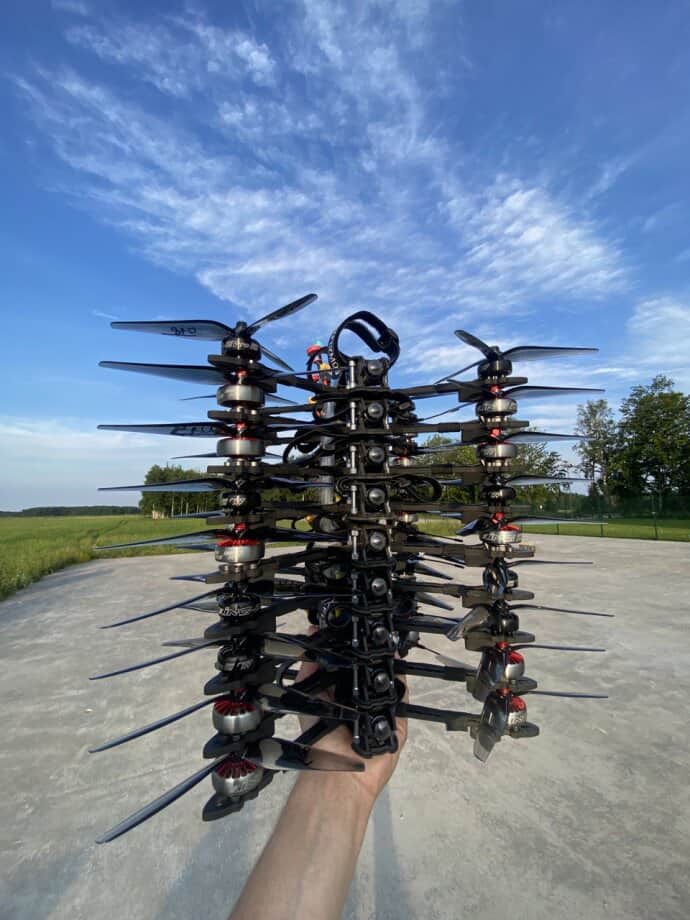Production that cannot be destroyed by missiles – kamikaze drones made in Ivano-Frankivsk for use on the front

Volunteers from the city of Ivano-Frankivsk assemble and send drones capable of carrying up to 1.5 kilograms of explosives to the front. These quadcopters can destroy Russian light vehicles and kill personnel without endangering Ukrainian soldiers.
The drones are made from Chinese spare parts. The cost of a "bird" is about US$400. Volunteers say that even a schoolboy with soldering skills can assemble such a drone after a short period of training.
Killer "birds"
The military is increasingly using FPV drones on the front; therefore, many places have started to produce such devices and are teaching people how to assemble and operate them. These drones are controlled through special glasses with a first-person view (hence the abbreviation FPV).
In the spring, the Port Frankivsk volunteer team started making such drones. Prior to that, its members had been buying drones, tactical ammunition and other items for use at the front.
"At some point, we started receiving a lot of requests to buy FPV drones. There were not enough drones on the Ukrainian market to cover even a quarter of the soldiers’ needs, so we decided to try to make them ourselves," says Roman Kapii, co-founder of the Port Frankivsk Foundation.

None of the team members had any experience in assembling drones. The Port Frankivsk volunteer initiative includes entrepreneurs, cultural workers, IT professionals, and so on. Before the full-scale war, most of them were members of the city's cultural community. Volodymyr Kaban, an IT specialist, helped launch the process of assembling the first batch of drones. He had no experience with them either, but he understood how everything should work.
Volunteers invested their own money and the money of donors to purchase components for the first batch of drones. They did not advertise their initiative until 20 prototypes had been successfully tested. In May 2023, when the new devices were sent to the front and tested in battle, the foundation announced a fundraiser for a batch of 70 combat FPV drones and 7 signal repeaters.

Sports FPV drones are more manoeuvrable than traditional "wedding drones". They move at high speeds and cannot hover. This makes them much harder to detect and shoot down. "A drone can carry up to 1.5 kilograms of explosives and fly up to 8 kilometres without a repeater. With the payload, the drone can reach speeds of up to 60 kilometres per hour," the volunteer said.
Parts for such drones are freely available on the market. These are not intended as military equipment; FPV drones are used in civilian life for entertainment, such as in sports racing. They can fly over terrain with difficult obstacles, get through narrow spaces and move through abandoned buildings. At the front line, drones are used to fly into Russian dugouts, tank hatches, cars and trucks with a high degree of accuracy.
The prices of FPV drones depend on their technical characteristics. The cost of a combat drone built out of Chinese modules is about US$400. A ready-made drone in Ukraine costs much more. Volunteers buy parts for the drones mainly with money provided by patrons, who pay for large batch orders for the military – more than 50 drones. Among them are owners of IT companies, local developers and entrepreneurs.
"We don't really manufacture, we assemble. There is no technological innovation involved. We order all the modules from China, and even a high school student could assemble a drone with just a short period of training," Kapii explained. He added that other organisations that produce drones for the front are also using the large-scale assembly process. The largest of them are Eskadron and Vyrii.
"We order the basic version of a Chinese drone, without the modules that are unnecessary for us. We mount a high-performance video transmitter, which is crucial for the drone's control range, add an antenna, remove the GPS, reflash it, and the UAV is ready for use in non-protocol conditions," the volunteer said.
Four to five people assemble drones at Port Frankivsk. The entire process runs on a volunteer basis, making it possible to produce UAVs for no more than the price of the parts. "We have a daily production output of 15 drones. There are manufacturers with much larger capacities. Production takes place in different apartments, offices, and small warehouses," the co-founder of the volunteer initiative noted.

Liuba Shypovych, founder of the Dignitas Fund that supports Ukrainian drone manufacturers, told us many IT companies have such production sites in their offices. "They have the funds to purchase the parts, as well as staff with engineering degrees. Learning how to assemble the drones is quite easy, and there are a variety of videos on the internet. Moreover, almost every pilot school has an engineering department where they teach how to assemble UAVs," she said.
Shypovych noted that "workshop huts", where Ukrainian soldiers build UAVs, are a widespread phenomenon along the contact line. "We bring together manufacturers and organise conferences and demo days for them. We estimate that some 10,000 to 12,000 drones are produced per month in Ukraine today," the volunteer added.
Volunteers hand the drones over to the pilots. "The "birds" are sent by Nova Poshta, a private Ukrainian postal and courier company, to frontline cities. Once there, the soldiers use makeshift tools to attach explosives to the UAVs, and the attack drones are all set. "As a rule, we get a video of their performance within 12 hours of their delivery," Kapii said.
Logistics from China and competing with the Russians
The volunteers say there is no alternative to Chinese parts in terms of price and quality. Some EU distributors have contracts with Chinese manufacturers, so buying from them is simpler than buying from China, although costlier.
However, Chinese firms also sell parts to the Russians. Manufacturers often prefer large orders from the Russian Federation and ignore small customers, so for volunteers, procurement turns into a hunt for the crucial parts.
"When it comes to large orders of parts, we are competing with the Russians. The same factory makes batches for both Russians and Ukrainians. On one batch, they write 'D**th to Ukrainians', on the other, 'Putin is a d***head'. However, the Russians can afford to expend public funds to buy tens and hundreds of thousands of drones, while small Ukrainian producers cannot do so," the founder of the Dignitas Fund said.
Kapii recounted that Russia once contracted for a large batch of 1.2 GHz and 1.3 GHz video transmitters used to make kamikaze drones, making it challenging for Ukrainians to get such parts.

Small producers must pay customs duties and value-added tax (VAT) when acquiring parts from China. This increases the cost of some pieces at twofold. "China does not supply anything directly to Ukraine. We order parts in Poland and pay duty there. Then we send them to Ukraine and pay duty once again," Shypovych explained.
In 2023, the Ukrainian Parliament exempted the import of drone parts from VAT and customs duties. However, this privilege is unavailable to most small producers, since they are not officially registered as UAV manufacturers.
"The benefit applies only to companies doing business with China. Even distributors such as Rozetka [a Ukrainian online store and marketplace], which have also begun to import parts from China, do not enjoy these benefits," the founder of the Dignitas Fund noted.
Translation: Myroslava Zavadska and Artem Yakymyshyn
Editing: Monica Sandor